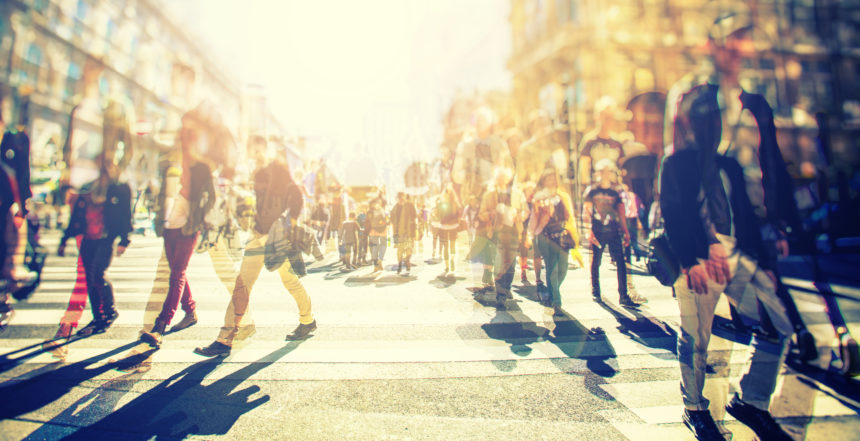Curfew during lockdown: number of people on the street not much different

Also read our factsheet One Year of Social Distancing Behavior on the Streets of Amsterdam.
Drawing on video footage from municipal public space cameras in Amsterdam, we investigated behavioral compliance with a curfew installed as a Covid-19 mitigating measurement in a period of lockdown. Based on the existing studies of the effect of curfews on aggregated transmission patterns (Baunez et al. 2020; Haug et al. 2021; Huber and Langen 2020), we expected that the curfew would lead to lower numbers of people on the street. Utilizing the curfew as a natural experimental situation, we compared the number of people on the street, six hours before the start time of the curfew (15:00 to 21:00) and five hours after the curfew start time (21:00 to 03:00), across four days before and three days during the curfew. Data (N = 995) were analyzed with a difference-in-difference approach (Wing et al. 2018). All statistical results were run using negative binomial regression (appropriate for estimating overdispersed count outcomes), specified with robust standard errors.
Negative effect of the curfew on movement relatively small
The study results were as follows: With the introduction of the curfew, the number of people on the street in the period 21:00 to 03:00 decreased, indicating that people complied with the measurement. Adding to this finding, around one-third of the people observed during the curfew were visually evaluated to have a legitimate reason to be on the street (e.g., walking with dog, bike delivery service). The negative effect of the curfew on movement was relatively small in magnitude, suggesting that this measure may only have a limited effect in a situation where society is already under lockdown. Finally, we found some, albeit fragile, evidence that the curfew was followed by a slight increase in the number of people in the period 15:00 to 21:00. Although this should be interpreted with caution, this result indicates some displacement effect, by which people chose to go outside before the curfew now that they cannot go outside after 21.00. We discuss the potential implications of these findings for transmission risks in the light of epidemiological literature suggesting outdoor behavior involves a low Covid-19 transmission risk.
Publication details and further reading
Liebst, L.S, Appelman, J. & Lindegaard, M.R. (2021). Results of the NSCR Curfew Study (pre-print, version 1). NSCR/University of Copenhagen/University of Amsterdam.
Liebst, L.S, Appelman, J., Bernasco, W., Hoeben, E., Snoek, C., Koelma, D. & Lindegaard, M.R. (2021). Behavioral Compliance with Curfew Measure during Lockdown: Results of the NSCR Amsterdam Curfew Study (pre-print, version 3). NSCR/University of Copenhagen/University of Amsterdam.
Note that these are preliminary results from a not yet peer-reviewed study in progress. The final results will be available at osf.io/7ek9d. The study was partly financed by ZonMw (grant number: 50-56300-98-603) and the Municipality of Amsterdam. It was conducted independently by the authors. We would like to thank Laura Hendriks for her contribution to the coding of the footage.
Actuele berichten

